
Sia
Exercise 3
Plane Geometry (II)
Level 1
Question 1
is a parallelogram with as shown. The diagonal is drawn.
(a) Prove that .
(b) Hence, explain why and .
(c) What property of parallelograms have we proved?
Question 2
Prove that the opposite angles of a parallelogram are equal.
Year 9 (A1) Mathematics
Question 2*
is a quadrilateral with and being the midpoints of sides , and respectively. Prove that is similar to , and hence that . Thus prove quadrilateral is a parallelogram.
Exercise 2
Level 3
Question-1
is a trapezium with . If and are the mid-points of and respectively, prove that:
(a) :
(b) ;
(c) the points and are collinear.
Question 2*
In the figure, is a trapezium, and is parallel to and . If bisects the area , the length of , in centimetres, is
(A)
(B)
(C)
(D)
(E)
(AMC)
Question 1*
Let be a quadrilateral, with diagonals meeting at right angles at .
(a) Find expressions for and in terms of and .
(b) Hence show that .
Question 2*
is a quadrilateral with . The bisectors of and meet the diagonal at and respectively. Prove that and are parallel.
(b) Prove that is a parallelogram.
Plane Geometry
Question 4
The diagram shows the parallelogram with diagonal . The points and lie on this diagonal in such a way that .
(a) Prove that .
(b) Prove that .
(c) Hence prove that is a parallelogram.
(b) is a parallerogram.
Question 2
In the diagram, is a quadrilateral in which the diagonals meet at , with and .
(a) Prove .
(b) Hence prove that quadrilateral is a parallelogram.
Question 3
is a parallelogram, and are straight lines and is the midpoint of SR.
(a) Prove that .
Question 3
Prove that the diagonals of a parallelogram bisect each other, i.e. prove that in the parallelogram ,
Question 4
Show that .
Level 2
Question 1
In the diagram, is a quadrilateral with and . The diagonal is drawn. Prove that:
(a) ;
Year 9 (A1) Mathematics
(b) Prove that the triangles and are congruent.
Plane Geometry (II)
(c) Deduce that .
Question 4
is a quadrilateral. The diagonals and intersect at and .
(a) Show that triangles and are congruent.
(b) Show that triangle is isosceles.
c) Hence show that triangle is isosceles.
Show that is parallel to .
Year 9 (A1) Mathematics
(b) Prove that the triangles and are congruent.
Plane Geometry (II)
(c) Deduce that .
Question 4
is a quadrilateral. The diagonals and intersect at and .
(a) Show that triangles and are congruent.
(b) Show that triangle is isosceles.
c) Hence show that triangle is isosceles.
Show that is parallel to .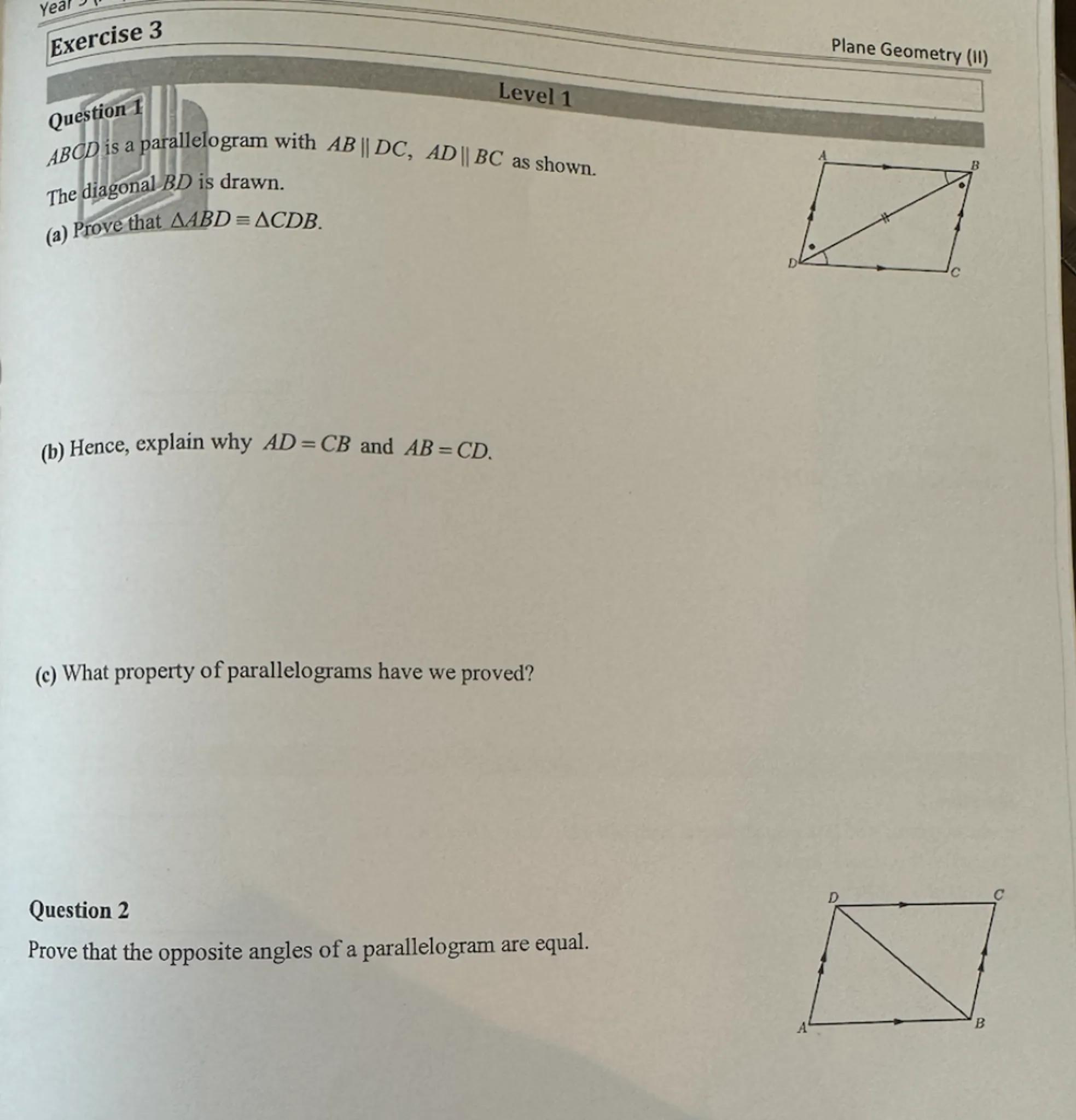
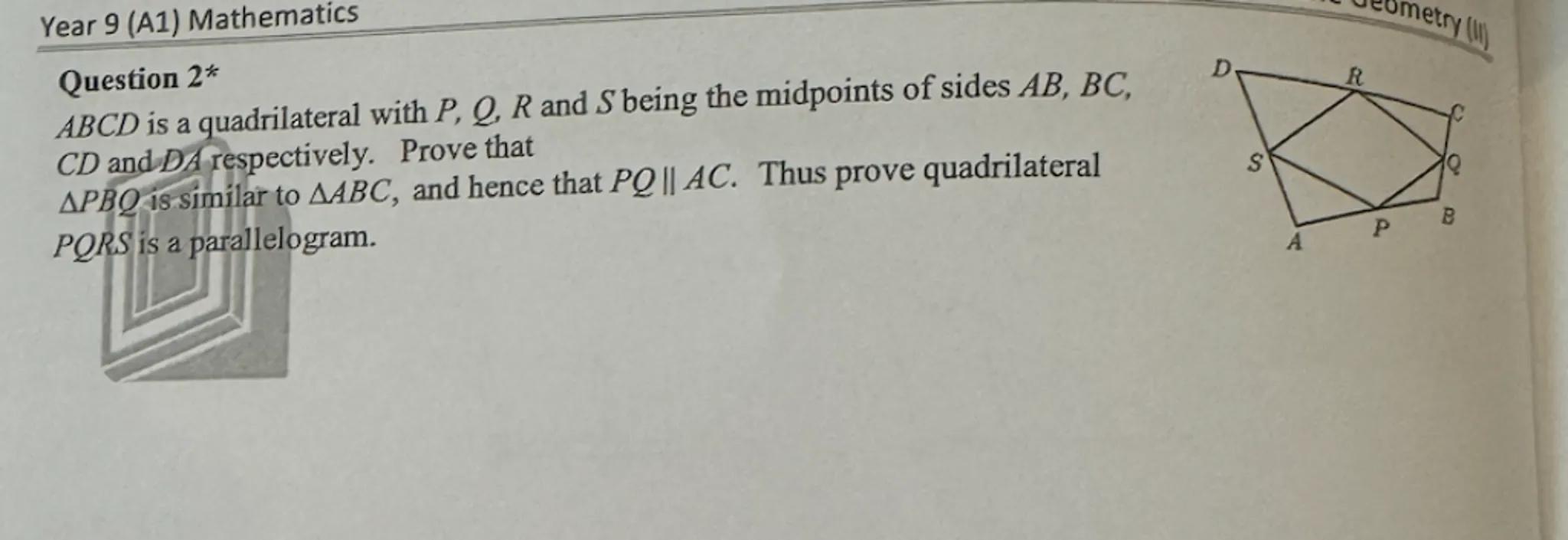
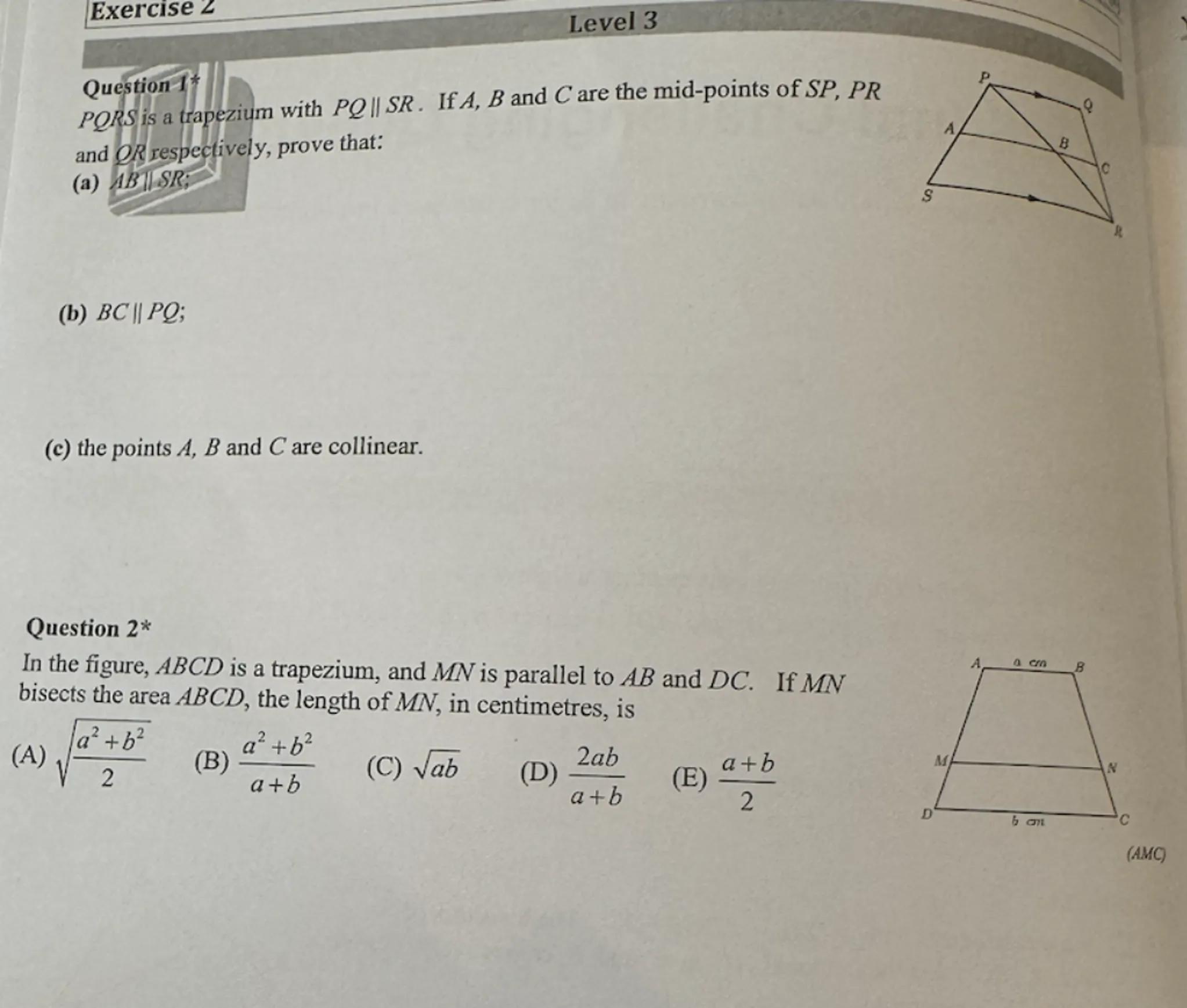
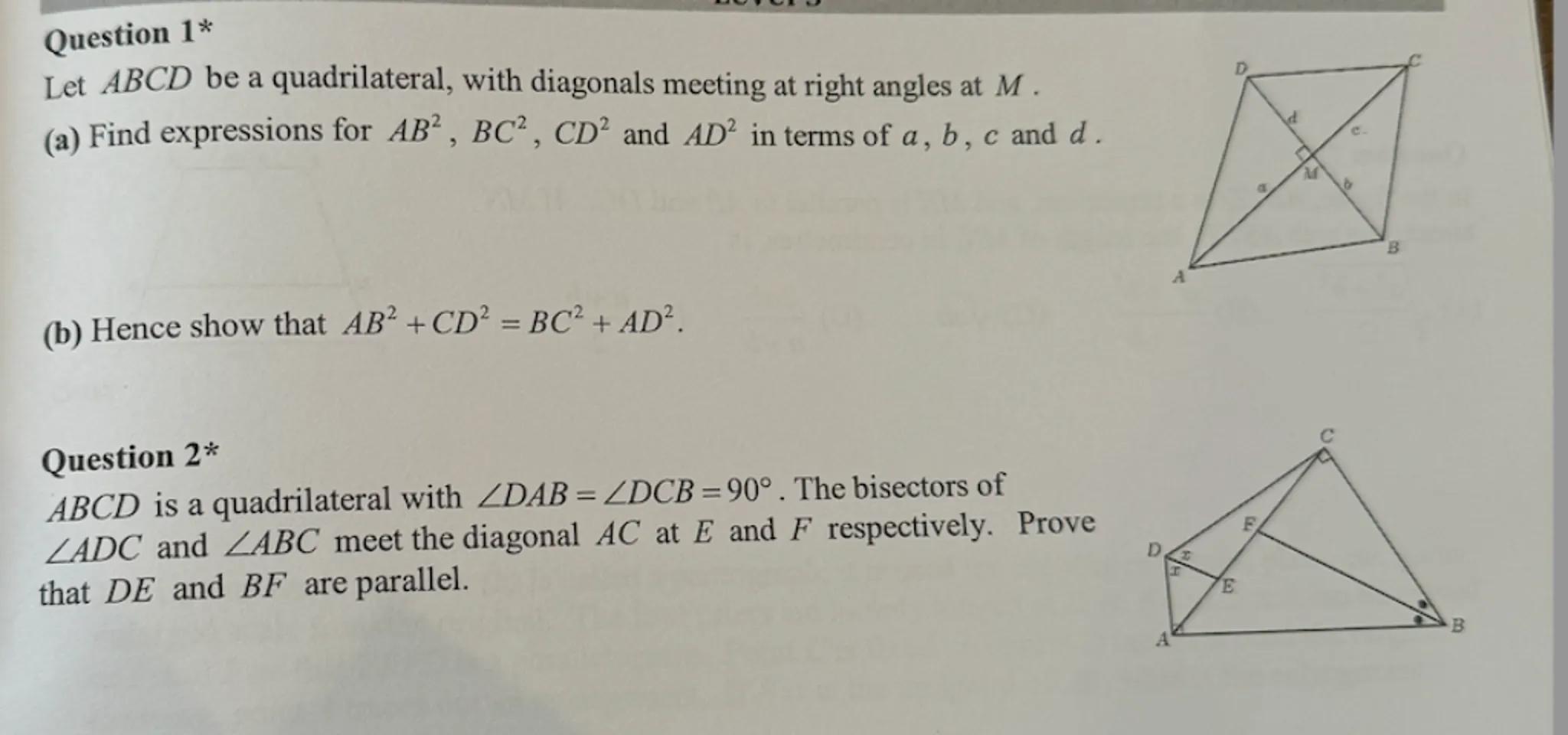
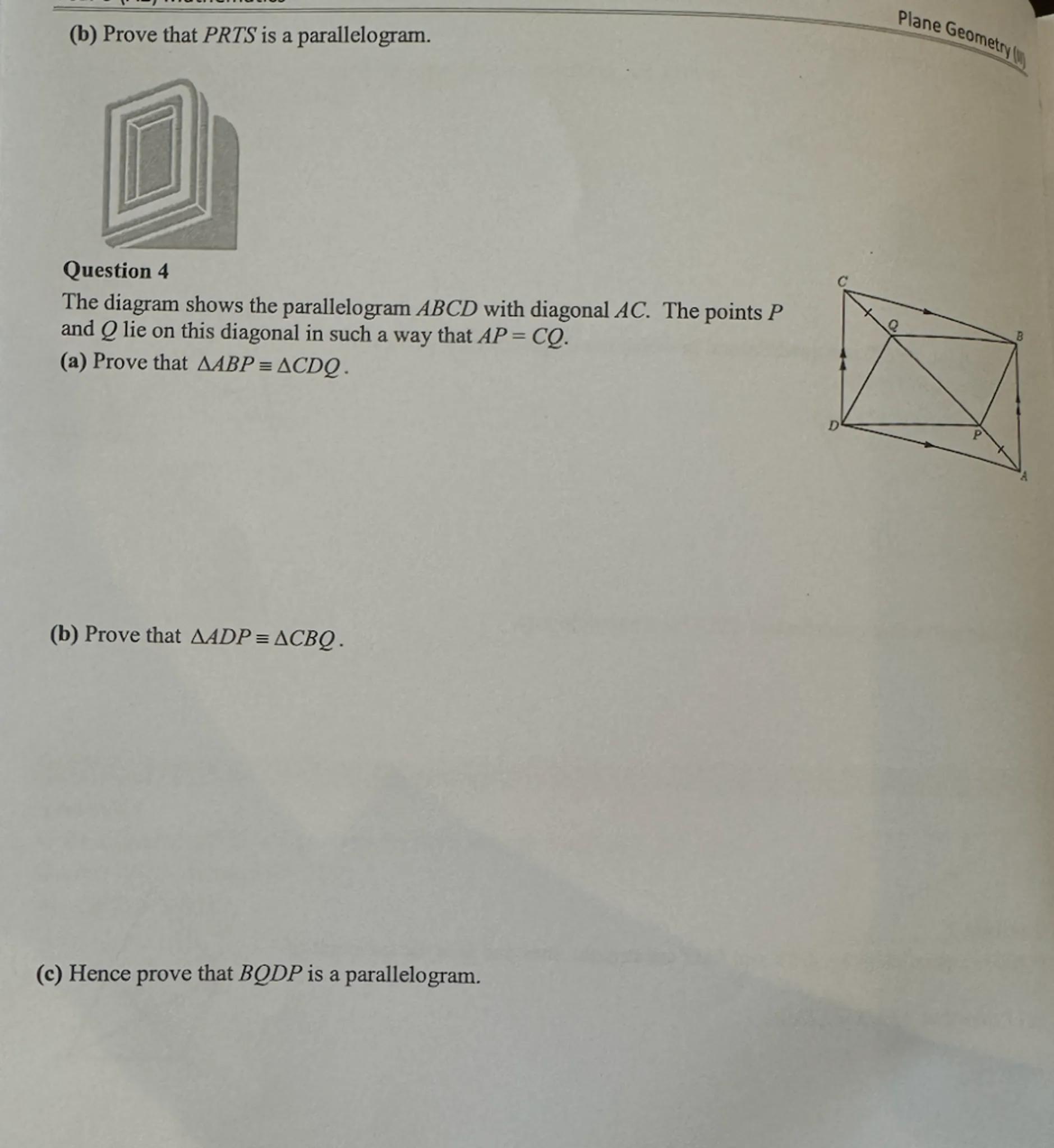
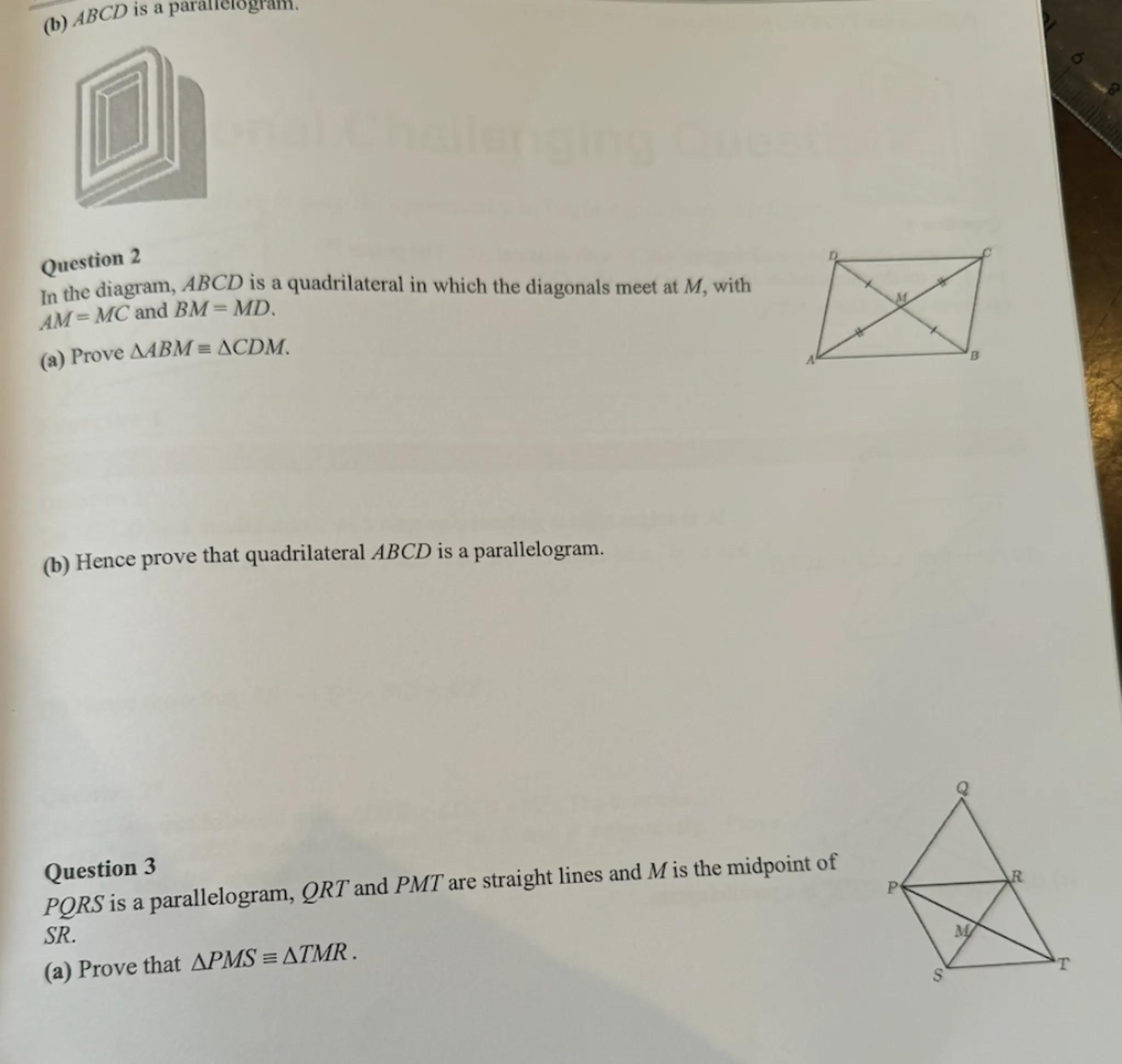
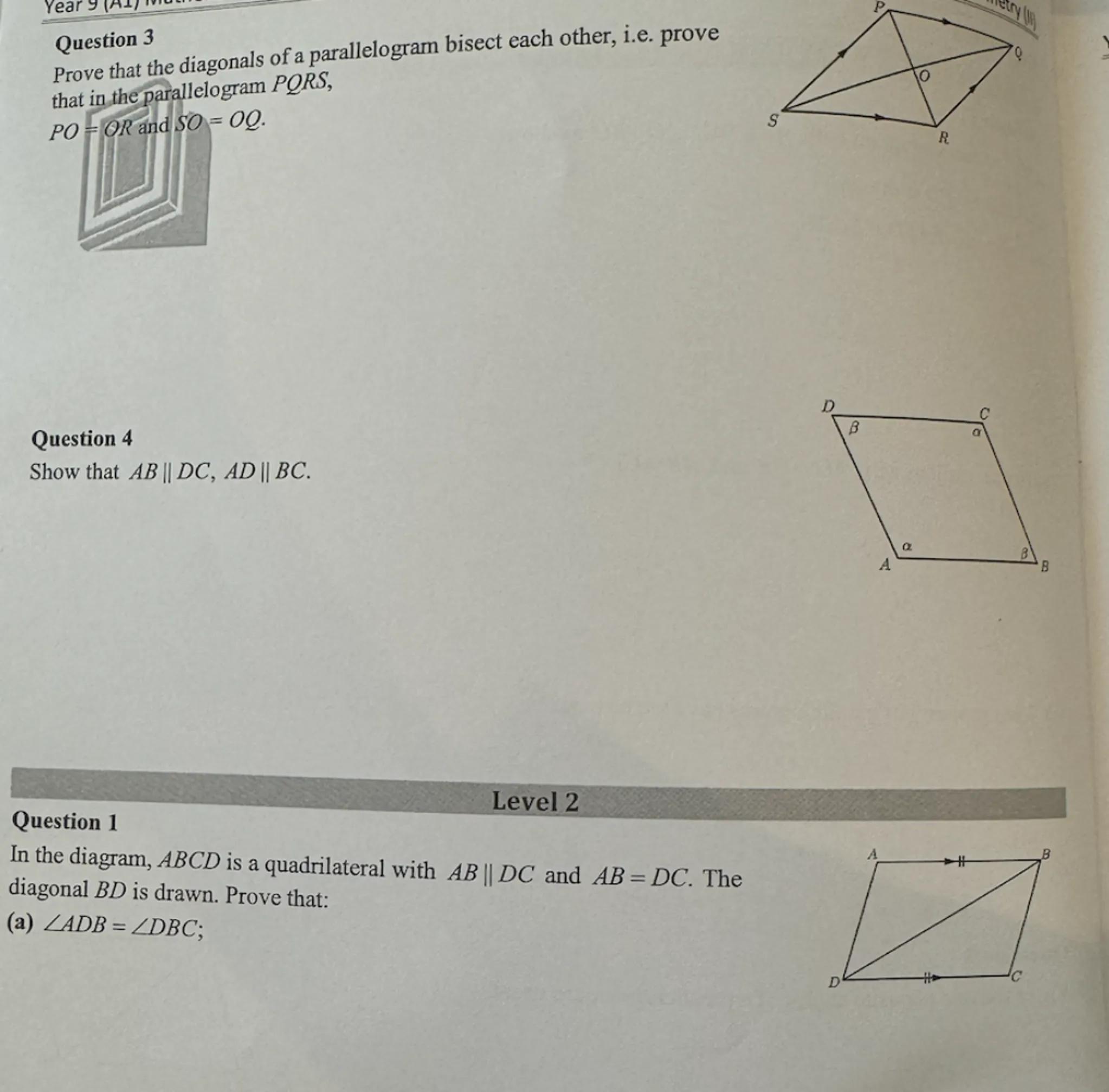
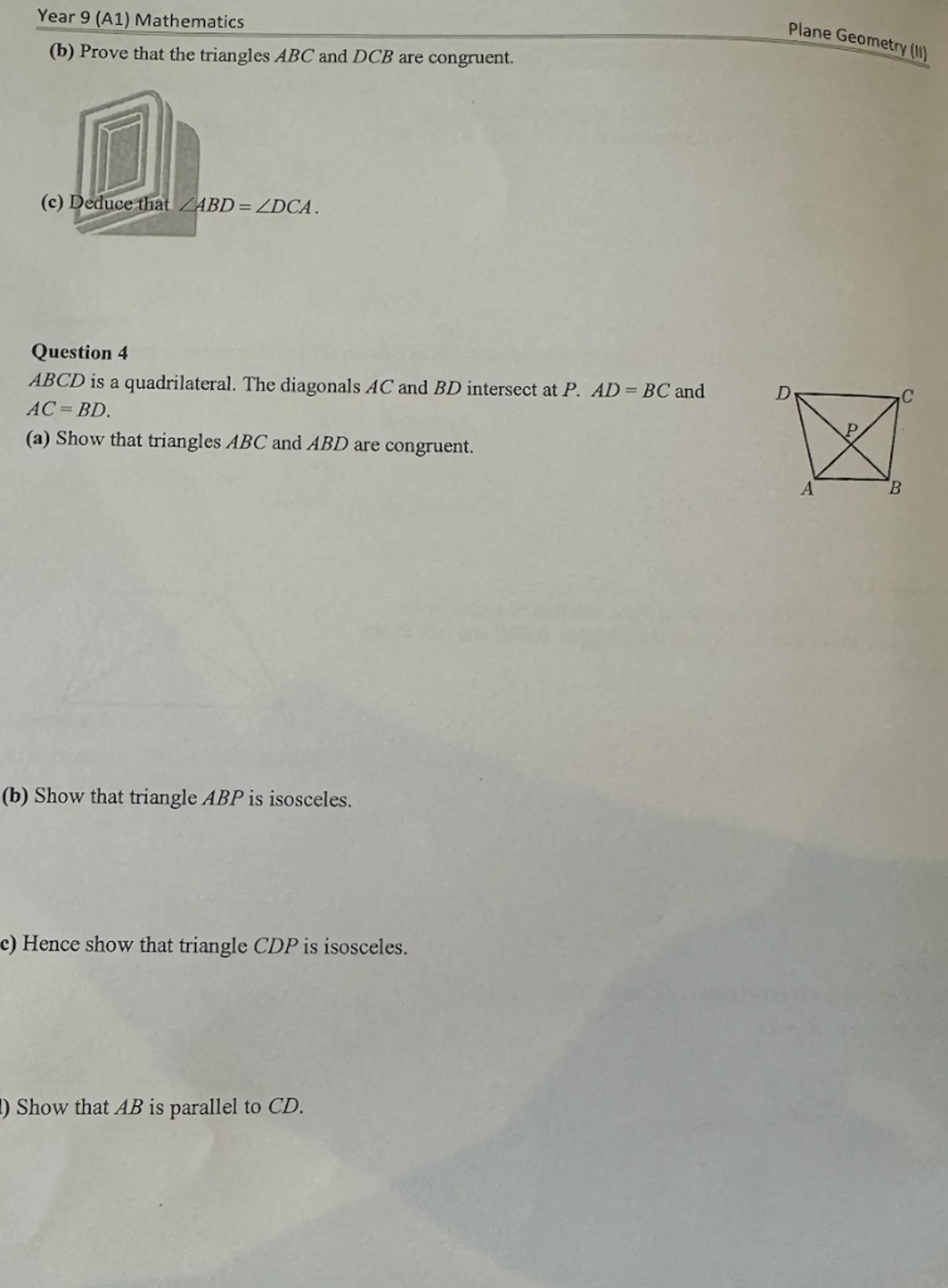
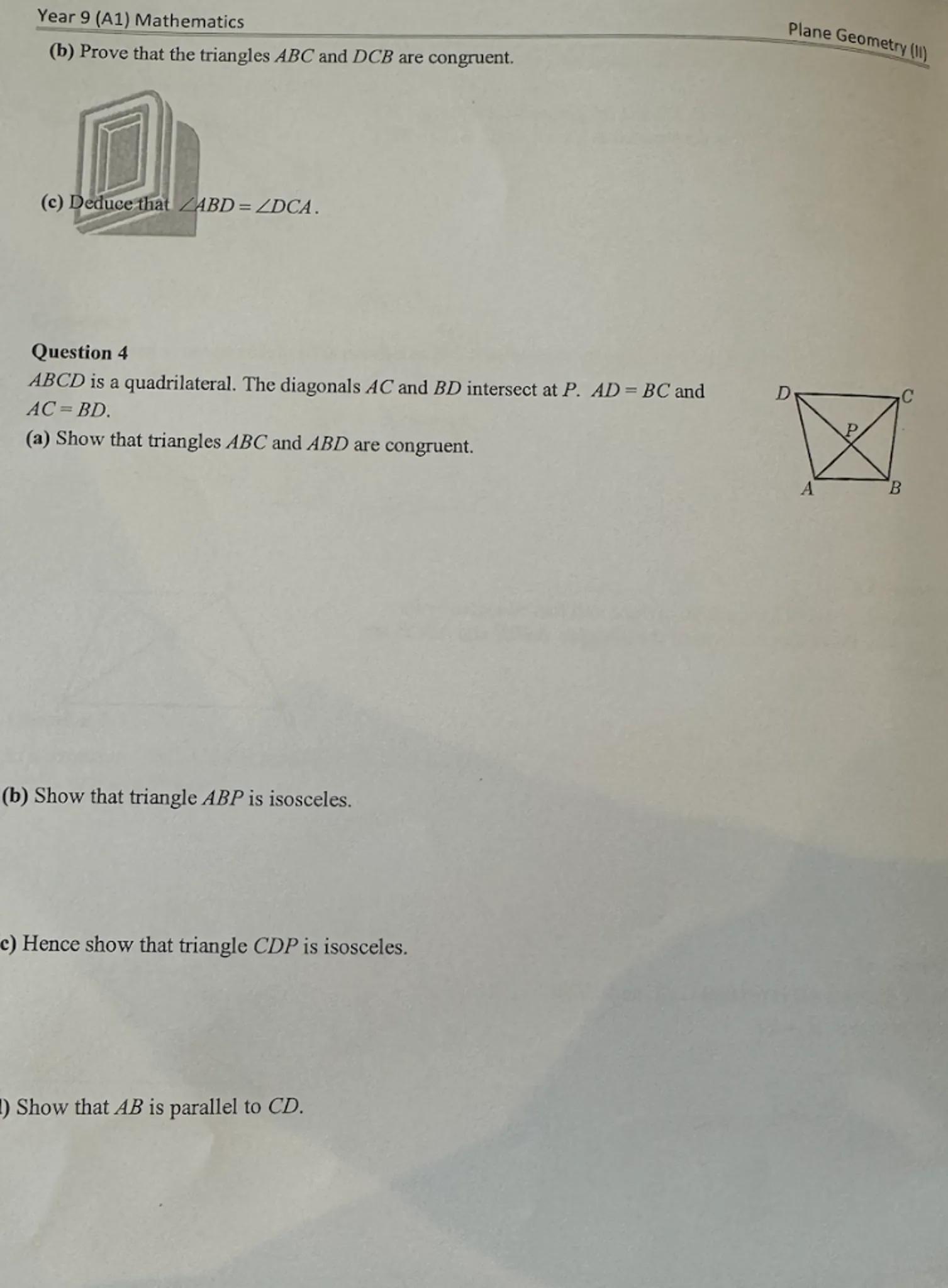

Answer from Sia
Posted 9 months ago
Solution by Steps
step 1
Given that is a parallelogram with and , and the diagonal is drawn
step 2
To prove that , we need to show that the triangles are congruent
step 3
In and , we have:
- (opposite sides of a parallelogram are equal)
- (opposite sides of a parallelogram are equal)
- (alternate interior angles are equal because and )
step 4
By the Side-Angle-Side (SAS) congruence criterion,
step 5
Since , it follows that and
step 6
The property of parallelograms that we have proved is that the opposite sides of a parallelogram are equal
1 Answer
A
Key Concept
Congruence of Triangles
Explanation
To prove that two triangles are congruent, we can use the Side-Angle-Side (SAS) criterion, which states that if two sides and the included angle of one triangle are equal to two sides and the included angle of another triangle, then the triangles are congruent.
Solution by Steps
step 1
Given that is a quadrilateral with and being the midpoints of sides and respectively
step 2
To prove that is similar to , we need to show that the corresponding angles are equal and the sides are proportional
step 3
Since and are midpoints, is parallel to and
step 4
Therefore, by the Midpoint Theorem, which states that the line segment joining the midpoints of two sides of a triangle is parallel to the third side and half as long
step 5
Since , quadrilateral is a parallelogram because both pairs of opposite sides are parallel
2 Answer
A
Key Concept
Midpoint Theorem
Explanation
The Midpoint Theorem states that the line segment joining the midpoints of two sides of a triangle is parallel to the third side and half as long. This theorem helps in proving similarity and parallelism in quadrilaterals.
Not the question you are looking for? Ask here!
Enter question by text
Enter question by image
Unlock Smarter Learning with AskSia Super!
Join Super, our all-in-one AI solution that can greatly improve your learning efficiency.
30% higher accuracy than GPT-4o
Entire learning journey support
The most student-friendly features
Study Other Question